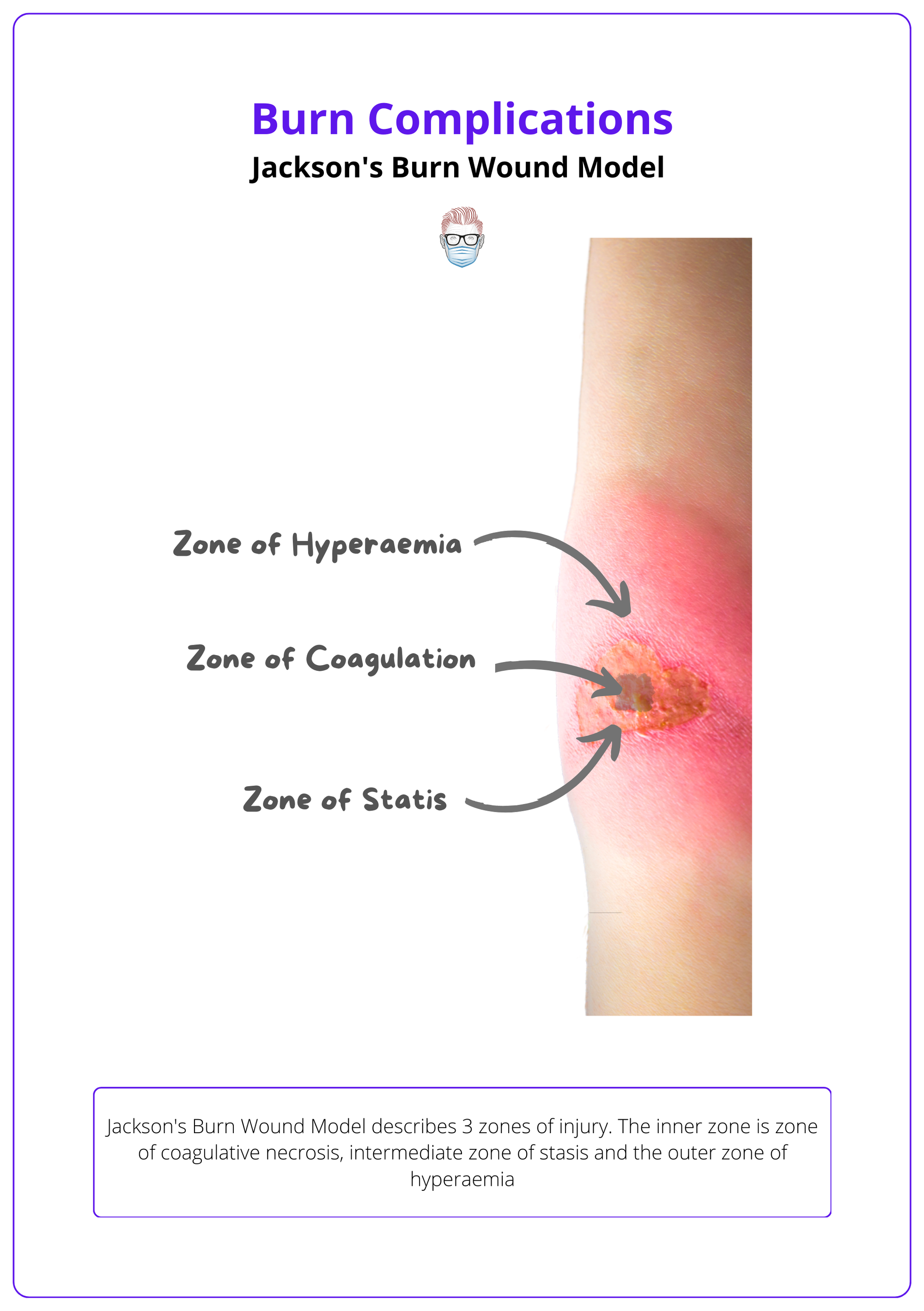In this week's edition
- ✍️ Letter from P'Fella
What are your thoughts on pre-rounds? - 🤓 The Sunday Quiz
How well do you know burn complications? - 🎙️ Behind the 'Fella
A snippet from "Flexor Teno, Sutures & Anki" - 📖 What Does the Evidence Say?
Parkland’s formula for fluid resuscitation - 🔥 Recommended Articles of the Week
Burn Fluids, STSG donor-sites, & acute burn care
+ 1-sentence summaries. - 💕 Feedback
Suggest ideas & give feedback!
A Letter from P'Fella
Pre-Rounding Is Overrated
Let's talk about pre-rounding, something many plastic surgery residents/trainees do every morning across the globe. Waking up patients early, asking the same questions, and rushing through exams before rounds – it's a frustrating and often unnecessary ritual.
👇
Pre-rounds are like customer service saying "I’m still here, please continue to hold'”. Not every patient needs to be woken up in the early hours of the morning.
The Case Against Pre-rounding
Disrupting Patient Rest
One of the main issues with pre-rounding is the disruption of patients' rest. By waking patients up, we might be doing more harm than good, as they lose out on the restorative benefits of uninterrupted sleep.
Another significant drawback of pre-rounding is redundancy. Information gathered during pre-rounds often gets repeated during the official rounds. This not only wastes time but also can frustrate patients who have to answer the same questions multiple times.
The Benefits of Pre-rounding
Fostering Autonomy and Ownership
By making initial assessments and formulating preliminary care plans, junior trainees get hands-on experience in decision-making. This practice prepares them for future independent practice, making them more confident and competent physicians.
Enhanced Clinical Skills
Pre-rounding also offers interns the chance to enhance their clinical skills. Direct observation of patients enables interns to notice subtle changes that might not be captured in electronic health records. These real-time observations are crucial for developing sharp diagnostic skills.
Pre-rounding is probably overrated in my opinion. By adopting a more patient-centered approach, ensuring efficient communication, and tailoring the process to each patient's needs, we can maintain the educational benefits for interns while prioritizing patient comfort and recovery.
P'Fella ❤️
tl;dr
👉 Pre-rounding disrupts patient rest & leads to redundant information.
👉 Can foster autonomy and enhance clinical skills for interns.
👉 Balancing educational benefits and patient comfort is crucial.
👉 Adopt a patient-centered approach.
The Sunday Quiz
How Well Do You Know Burn Complications?
Welcome to the next round of The Weekly Quiz.
Each edition of thePlasticsPaper includes a quiz question designed to challenge and engage our readers. Keep your wits about you and join in every week — the winner at the end of six rounds will earn you a $100 voucher.

We're planning to discuss burn complications in an upcoming podcast episode. Subscribe on Spotify or Apple to listen once it's out!
Behind the ‘Fella
Episode 2 is LIVE!
Tune into our podcast for exclusive team meetings where we uncover behind-the-scenes details of the platform and discuss hot topics in plastic surgery with our fellows. In this week's episode:
💯 Live Sunday Quiz
😷 Flexor Tenosynovitis
🗂️ Anki Flaschards
💬 the Fellow's Debate!
Listen on Spotify & Apple!
If there's any specific discussion you're interested in, let us know below.
the Fellows' Corner
This Week's Focus: Poland Syndrome
In case you've missed out, here's a reminder to check out our fresh articles, clinical cases, and surgical techniques focused on the Chest Wall.
Here's an overview of our article on Poland Syndrome.
Poland Syndrome
Definition
A spectrum of unilateral congenital chest wall deformities involving the sternal head of the pectoralis major. It is associated with ipsilateral hand anomalies.
Aetiology
Poland syndrome occurs predominantly on the right side and mostly in males. The precise aetiology remains uncertain but working theories include subclavian artery hypoplasia, genetic and teratogenic.
Presentation
Poland syndrome is a constellation of phenotypes including the absence of hypoplasia of the sternal portion of the pectoralis major alongside predominantly ipsilateral chest wall and hand differences.
Investigations
Poland syndrome is a clinical diagnosis. Imaging is useful to exclude rare associations and for pre-operative planning.
Differential Diagnosis
The differential diagnosis of Poland syndrome depends on the structures involved - chest wall, shoulder, and hand. Rare syndromes and associations should be kept in mind.
Management
Surgical management aims to create a stable and symmetrical thorax and chest wall while optimising hand function and appearance.
What Does the Evidence Say?
Fluid Resuscitation
Is Parkland’s formula the best for fluid resuscitation?
The best formula for fluid resuscitation of burns remains a topic of debate, with various studies proposing different approaches. Blanco-Schweizer (2019) and Daniels (2020) both suggest that the Parkland formula, which estimates fluid resuscitation based on body surface area, may not be the most effective method. Blanco-Schweizer (2019) found that the BET formula, which uses high albumin concentration fluids, successfully resuscitated burn patients with less fluid administration. Similarly, Daniels (2020) found that a restrictive fluid regime was associated with higher survival compared to the Parkland formula. However, these findings are not universally accepted, and further research is needed to determine the most effective fluid resuscitation formula for burn patients.
Articles of the Week
3 Interesting Articles with 1 Sentence Summaries
The study shows that maintaining ECF volume and circulatory response is vital, requiring more fluids at a faster rate than expected. Within the first 24–30 hours post-burn, circulatory hemodynamics are closely tied to ECF volume maintenance, and it diminishes afterward.
This systematic review of split-thickness skin graft (STSG) donor-site morbidities found that the mean time to epithelialization ranged from 4.7 to 35 days, with significant variations in pain, infection rates, and scarring. It highlights the need for standardized assessment tools to evaluate and manage STSG donor-site complications.
Explore the need for a systematic approach to assess burn wounds and manage major burns & inhalation injuries. Also covers emerging surgical techniques for debridement and methods for wound closure using autografts and skin substitutes.


